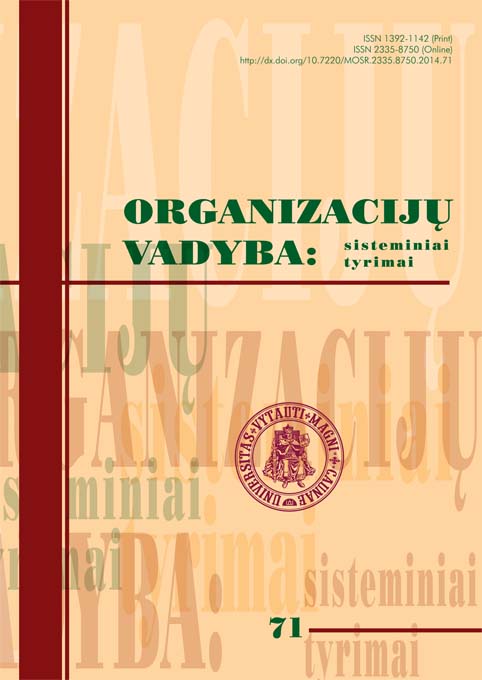Patyčios darbe: individualios ir organizacinės priežastys
Potential antecedents of workplace bullying: the importance of individual and situational factors
Author(s): Milda AstrauskaitėSubject(s): Economy
Published by: Vytauto Didžiojo Universitetas
Keywords: Workplace bullying; Leadership; Job characteristics; Organizational factors; Individual factors; Patyčios darbe; Vadovavimas; Darbo charakteristikos; Organizaciniai veiksniai; Individualūs veiksniai
Summary/Abstract: Workplace bullying refers to the situations where one or more individuals perceive exposure to repeated and persistent negative behaviors from colleague(s) or supervisor(s) (over the last six months). These behaviors may be person-related, work-related, and/or physically intimidating behavior (Einarsen, 2000, 2005; Notelaers, 2011). The phenomenon of workplace bullying has been proved to be among the most severe workplace stressors (Hauge et al., 2010; Fox, Stallworth, 2010). The negative consequences of workplace bullying encouraged researchers to analyze potential antecedents that may trigger or prevent the phenomenon in organizations (Astrauskaitė, 2013; Notelaers, 2011). According to H. Leymann’s (1996) work environment hypothesis, job characteristics and leadership are responsible for workplace bullying. However, previous studies reported individual antecedents, such as personality (Bowling et al., 2010;¬ Glasø et al., 2007) and conflict solving styles (Baillien, De Witte, 2009) being significantly related to workplace bullying as well. The inconsistent findings related to the explanatory power of individual and situational factors (Agervold, 2009) and potential cultural differences (Baillien, Rodriguez-Munoz, De Witte et al., 2010) raise the question whether the relationships between individual, organizational factors and workplace bullying are the same among Lithuanian employees in comparison with those reported in the previous studies, and how much of variance of workplace bullying is explained by individual and situational factors. Hence, the main goal of the present study was to reveal relationships between individual, organizational factors and workplace bullying and to identify the amount of variance of workplace bullying that is explained by the organizational and individual factors in Lithuanian group of employees. Straipsnyje atskleidžiamos individualių ir organizacinių veiksnių sąsajos su patyčiomis darbe ir įvertinama veiksnių svarba, aiškinant patyčių darbe reiškinį Lietuvos darbuotojų grupėje. Rezultatai atskleidžia didesnę organizacinių veiksnių svarbą ir iš dalies patvirtina H. Leymann (1996) darbo aplinkos hipotezę.
Journal: Organizacijų vadyba: sisteminiai tyrimai
- Issue Year: 2014
- Issue No: 71
- Page Range: 17-31
- Page Count: 14
- Language: Lithuanian

